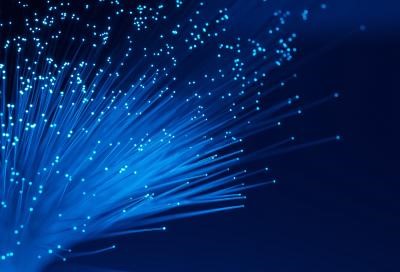Prodotti, soluzioni e servizi per le aziende
Originally posted on CIO.com
Now, more than ever, an enterprise’s success is dependent on its connectivity, as work moves online and becomes increasingly mobile. While campus networks are integral to ensuring fast and stable connectivity, traditional copper-based networks are no longer able to sustain data-hungry applications, such as Virtual Reality (VR) applications and High Definition (HD) video. Copper-based networks are also unable to support the latest technologies — such as Wi-Fi 6 — and lack the agility necessary to quickly meet evolving requirements, since they are often designed and constructed by campus owners themselves. The introduction of optical fiber is set to redefine the architecture of campus networks and bring about numerous benefits that traditional copper-based networks simply can’t.

The exponential growth of data transfer is pushing traditional campus networks to the limit. Copper wiring lacks speed and distance, both critical for an effective campus network. Current copper networks can only support speeds up to 1 Gbit/s and require re-cabling if any rate upgrades are to be made. Furthermore, additional investments such as signal boosters or rewiring, are needed to maintain network performance if the site is particularly large. However, even when upgrades are made, a network still may not be able to keep up with data demands. In particular, the evolution of data centers and the acceleration of enterprise cloudification will likely overwhelm traditional campus networks.
Compounding the problem, the surge in demand for high-resolution video streaming has also impacted the needs of campus networks. For example, intelligent applications are becoming increasingly common on campuses, adding to the already high volume of video traffic from conferences, streaming, and VR devices.
Elsewhere, Internet of Things (IoT) applications, ranging from service robots and intelligent access controls to voice devices and sensors, are now regularly being deployed on campuses. The addition of so many IoT devices increases the complexity of the network structure, creating an even greater burden on copper wire networks.
Upgrading a campus network can be costly, especially when re-cabling is required. For obvious reasons, campus owners prefer future-proofed upgrades that are capable of sustaining data loads in the long term. Organizations are therefore actively looking for solutions that offer not only a leap in network capability right now, but also allow easy management and the potential for smooth further upgrades in the future, to ensure that systems remain viable and durable.
Compared to copper alternatives, all-optical networks deliver faster, more stable, always-on connectivity. They also meet network evolution requirements, providing sufficient bandwidth for new services — according to the United Nations’ International Telecommunication Union — over the next 30 years. In addition, an all-optical network offers a simplified architecture, saving valuable space and reducing Total Cost of Ownership (TCO). Operations and Maintenance (O&M) costs can also be minimized, since only one person is required to maintain an entire campus network.With all essential features in-built, Huawei Campus OptiX is an obvious solution for campuses. Specifically, Campus OptiX uses optical fibers for campus networks and provides a simplified network experience, integrating Passive Optical LAN (POL) all-optical networking architecture and IP network technology. Such a design can easily handle the high requirements of large campuses — such as airports, educational institutions, hotels, and large offices — that have a wide range of services, dense populations, and complex network systems.
The Campus OptiX solution delivers an industry-leading ultra-broadband experience through Huawei’s OptiXaccess OLT platform, which supports 50G PON to eliminate rate bottlenecks and support long-term network evolution. In addition, the capacity of flagship core switches for campus networks is six times that of competitor devices, enabling smooth, all-optical evolution over the long term.
The solution is also environmentally-friendly, consuming 30% less power and reducing carbon footprints by 50%, thanks to the use of passive devices over active. The network runs on a wide bandwidth with 40 km-long distance coverage and is immune to magnetic interference and corrosion. Plus, with an extremely long service life of 30 years, TCO is vastly reduced.
Powered by Artificial Intelligence (AI), the Campus OptiX solution offers visualization for the entire end-to-end user experience, with network O&M transformed from passive to proactive. Along with advanced features, such as unified management of IP and POL devices, plug-and-play, and zero-touch deployment, O&M efficiency is increased by 60%, making it possible for one person to manage the entire campus.

More than 600 enterprises in 40 countries have already deployed the Huawei Campus OptiX solution for their high-quality campus networks, accelerating digital transformation in a wide array of sectors. In the United Arab Emirates, for example, Huawei has deployed a 10G PON Campus OptiX solution for Emaar Projects, building a smart community in Dubai Creek Harbour. Elsewhere, in Egypt, Huawei built the digital campus ICT infrastructure for the University of Canada in Egypt. And luxury hotels, such as Mexico Original Hotel Group, have adopted the Campus OptiX solution to reshape the hotel check-in experience.
In June 2019, Huawei participated in the preparation and release of China's first Passive Optical LAN Engineering Technical Standard, promoting the development of the all-optical industry. The establishment of the Optical Network Alliance also highlights the significant contributions Huawei has made: the company was appointed as the Alliance’s first director-general. The Campus OptiX solution represents more than just the replacement of copper wires in campuses around the world; it also represents Huawei’s commitment as a trusted partner to grow together with customers through continuous innovation.
Discover more details about the Huawei Campus OptiX solution.